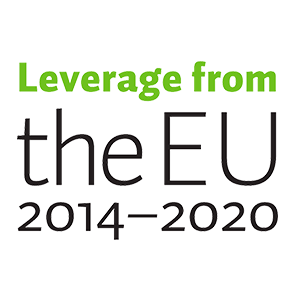
How can climate action be measured in industrial areas?

Measuring carbon neutrality and resource wisdom
emission-free construction site, monitoring system, Technical Research Centre of Finland (VTT), life cycle assessment, measurement, emission calculation, resource wisdom, climate change mitigation
In order to effectively monitor the carbon neutrality and resource wisdom measures of industrial areas, emission calculations and monitoring tools must be continuously developed and applied. Emission reductions achieved in industrial areas are significant in view of the climate targets of their adjacent cities as the targets cannot be met without a contribution from businesses.
• Two construction sites: low-emission construction machinery were piloted in Espoo and Helsinki.
• Cooperation: the development of a monitoring system for construction site emissions started as a collaboration between the Technical Research Centre of Finland and the contracting entities of cities that are signatories to the sustainable procurement Green Deal agreement for emission-free construction sites.
• Plastic: the impact of plastic recycling on greenhouse gas emissions from waste treatment was assessed in a trial carried out in the Vuosaari Harbour area.
This solution is right for you if
- you are looking for general information on measurement and calculation methods related to carbon neutrality and resource wisdom targets for industrial areas and construction sites.
BASIC FACTS
- Location: emission-free construction site pilot in Espoo and Helsinki, Vuosaari Harbour, Blue Industry Park in Turku, energy efficiency project in Vantaa
- Implemented by: participants in the HNRY project (Carbon-neutral and resource-wise industrial areas project)
Emission reductions in industrial areas are important for the climate targets of the participating cities
The cities have set ambitious climate targets, and they aim to achieve carbon neutrality by 2035. When a city aims for carbon neutrality, it means that emissions produced within that area are reduced to a set level (e.g. 80% of the level of 1990) and the remaining emissions are compensated.
With regard to resource wisdom, cities aim for long-term targets that are based on EU targets (by 2040). Becoming resource-wise requires close interaction and development work, including in the management of materials and logistics, between the different project participants. For example, possibilities for resource-wise and energy-efficient use of construction machinery were reviewed at Vuosaari Harbour. There is also massive potential in materials recovery and intensifying circular economy as the plastic pilot project showed.
Basis and scope of emission calculations
The state and municipalities base their emission calculations on production or area. They include all greenhouse gas emissions produced within the set area (Scope 1) and emissions from the production of energy purchased from an outside source (Scope 2). When measuring the carbon neutrality of an individual business, the calculation can focus on direct GHG emissions (Scope 1), such as the use of fuels in energy production and in vehicles, and on indirect GHG emissions (Scope 2), such as emissions from the production of purchased electricity and district heating. The rest of the emissions are compensated (Scope 4).
For industrial areas, it is best to base the calculation on consumption so that emissions from the production, transport and disposal of products and services produced and consumed within the industrial area during a set period of time (Scope 3) are taken into consideration. An example of a consumption-based calculation can be found in the concept of emission-free construction sites for the Lukutori construction site.
Emission-free construction site – calculation scope and tools
Constructions sites usually have clear boundaries within which direct emissions are produced. Maintenance sites are not as clearly defined. Materials, fuels and purchased electricity mainly come from outside these boundaries. The scope of the emission calculation for a construction site depends on which processes are identified as most significant in terms of emissions.
In the Lukutori pilot project in Espoo, the majority of emissions were identified as being indirect emissions. The consumption-based calculation used also factored in emissions from the use and production of the fuel in the machinery, the production of batteries and electricity used for electricity-powered machinery, the production of electricity used for on-site power generation and the production and transport of materials used on site.
The emission calculation for the Kulosaari pilot construction site in Helsinki included emissions from the production of fuels (including biofuel) used in construction machinery as well as emissions from the production of electricity used by machinery and the construction site.
The lack of an established monitoring system has made it difficult to monitor the data needed for emission calculations. The parties to the Green Deal agreement for emission-free construction sites are in the process of developing a monitoring tool to be introduced by the end of 2022. The introduction of the monitoring tool and new practices will require contractors and machinery operators to be trained in order to ensure the quality of the data collected.
Data and tools for measuring and monitoring the climate action of industrial areas
An extensive overview on the factors affecting the resource wisdom and carbon neutrality of an industrial area has been drawn up and included in the Turku Blue Industry Park Guide. The scale does matter as energy-efficiency investments and the energy production of an entire industrial area or a cluster of businesses can bring significant emission reductions. An area can even become climate positive.
A pilot project that trained individual companies using company-specific customised content also produced training material for public use. Company training can be used to raise awareness of emission sources, assist with calculations and the implementation of climate measures.
In Espoo and Helsinki, the emissions of an emission-free construction site were compared to those from an “ordinary” construction site. The sustainable procurement Green Deal agreement for emission-free construction sites will help to harmonise practises and introduce monitoring tools for contracting entities.
Municipalities’ emission calculations tend to follow common guidelines but individual organisations and companies can apply such varying scopes and methods for calculating indirect emissions that it compromises the comparability of the results. There is a need for harmonisation, and this is why the experience gained during projects should be put into practice more widely.
TAKE-HOME MESSAGES
- The most sensible emission calculation method for an industrial area is consumption-based calculation.
- It is important to maintain the transparency of the calculation method and the reasons for the set scope.
- There is a need for methods to be harmonised, and therefore the experience in calculation methods and tools gained during projects should be actively put into practice more widely.




